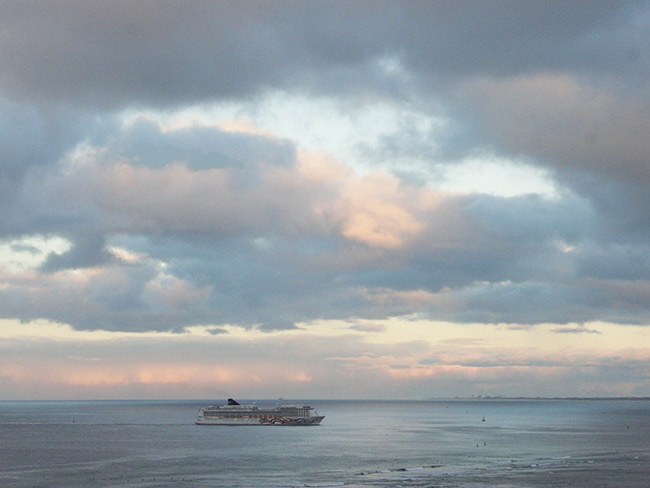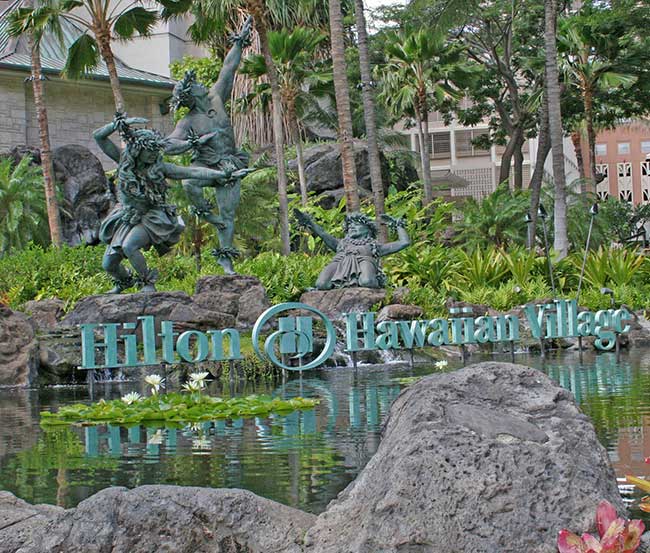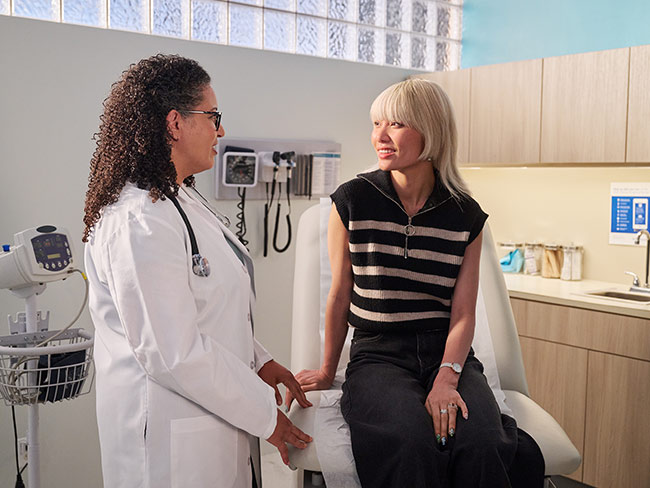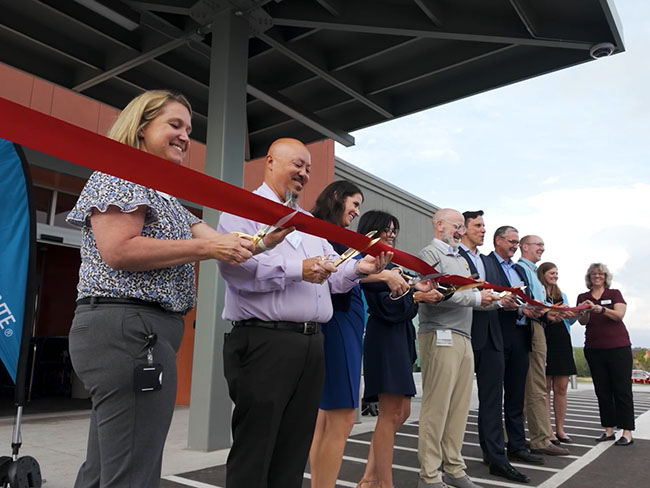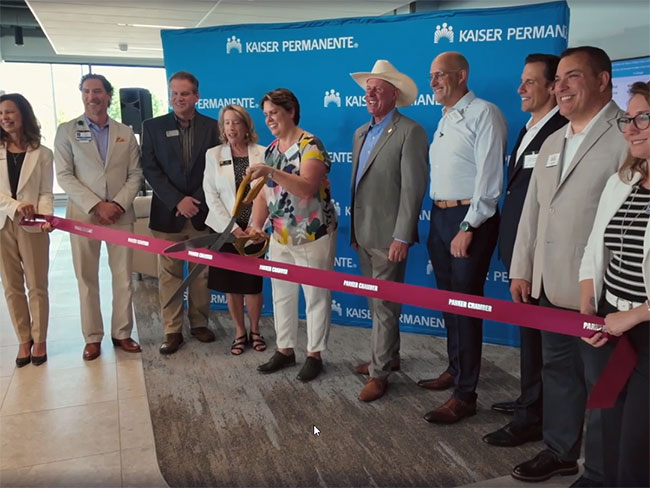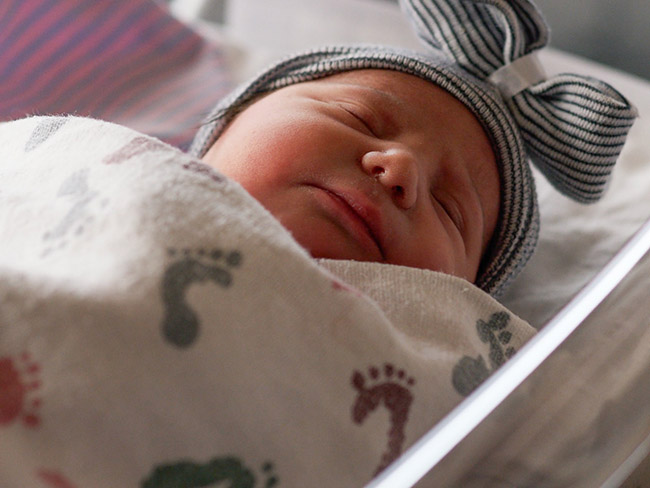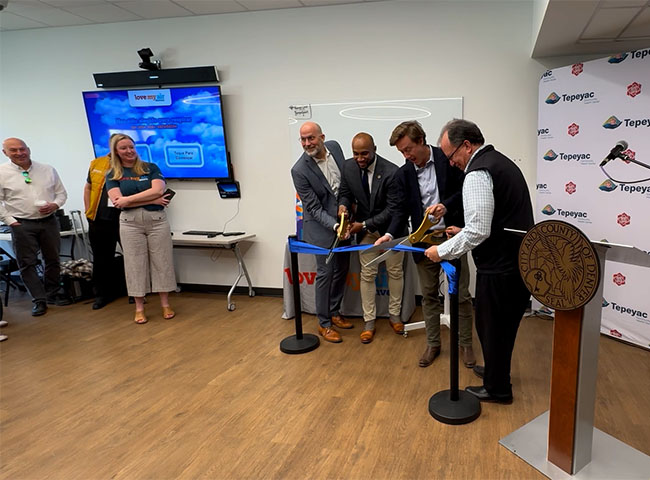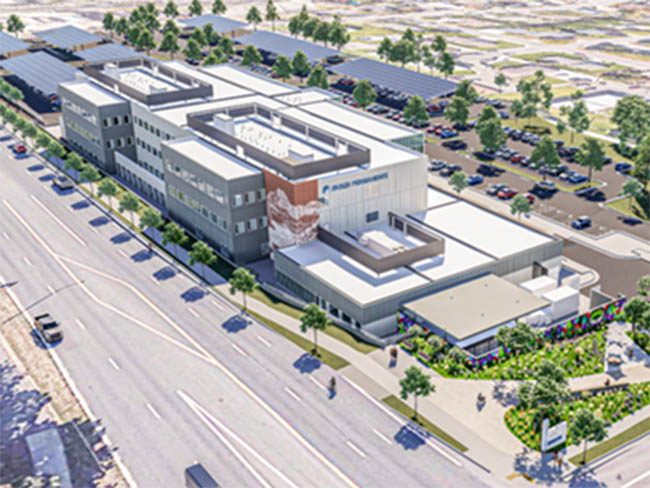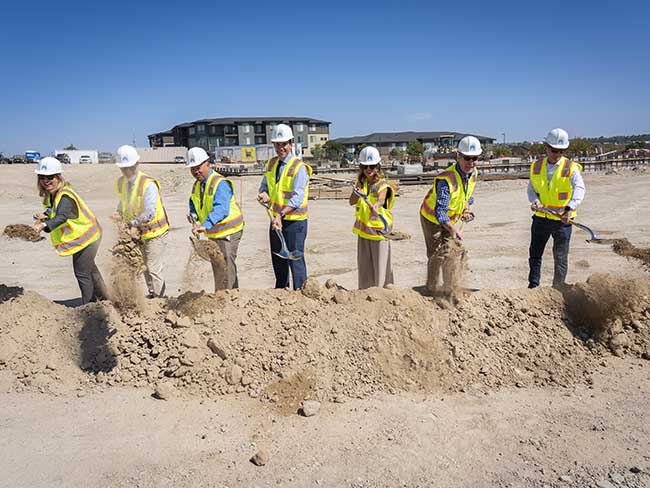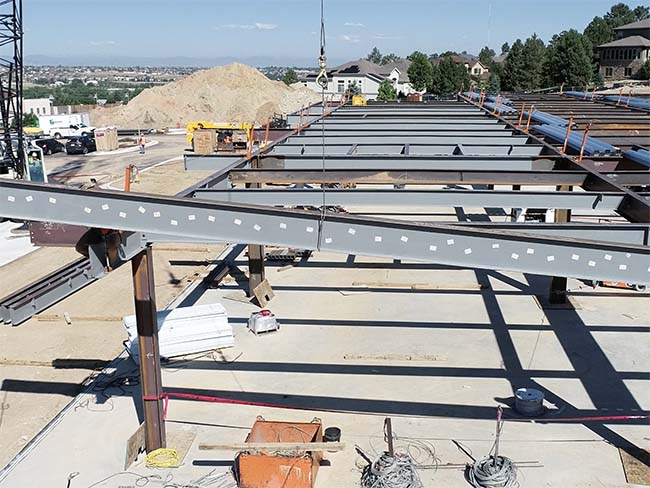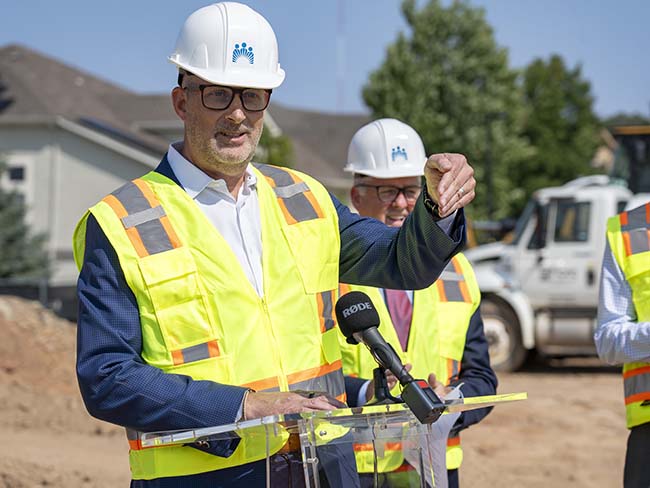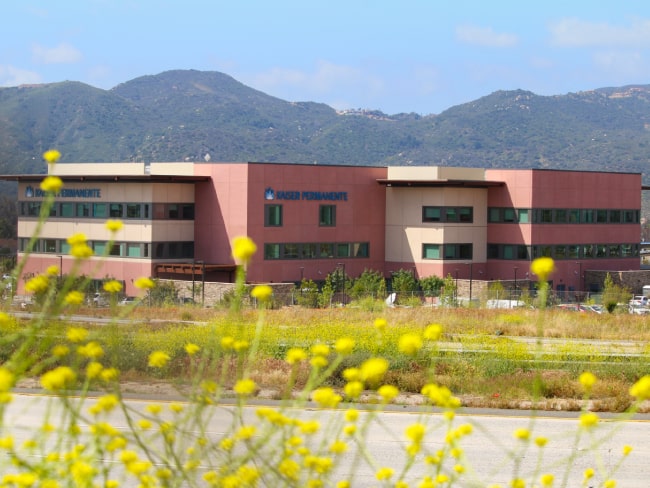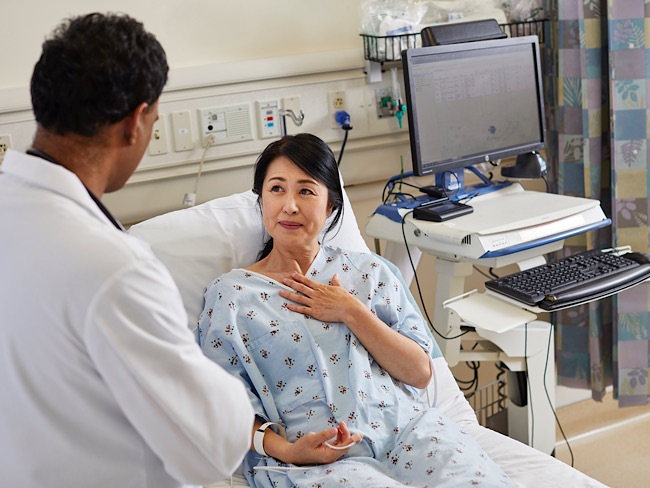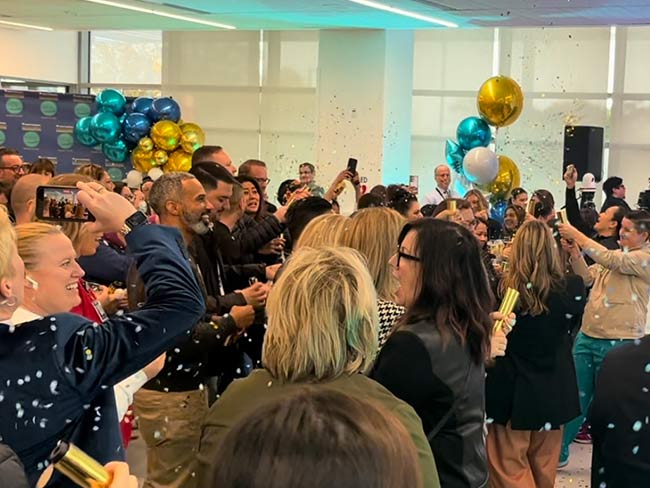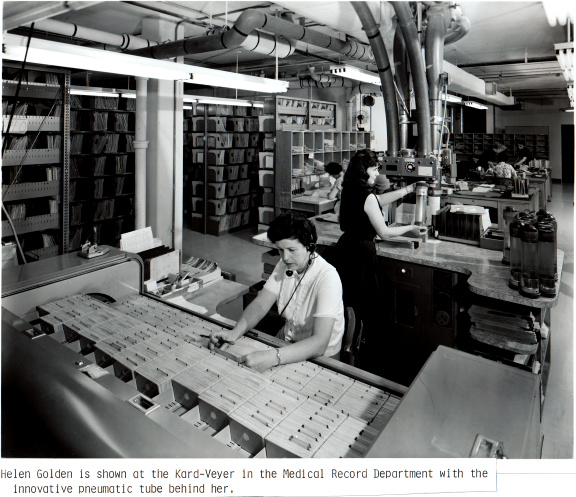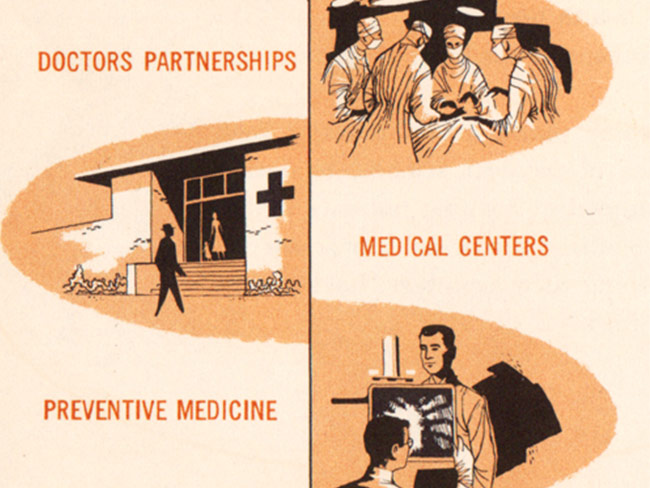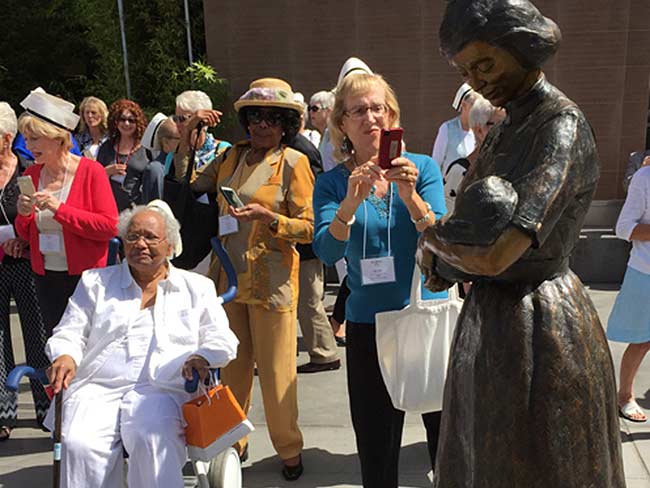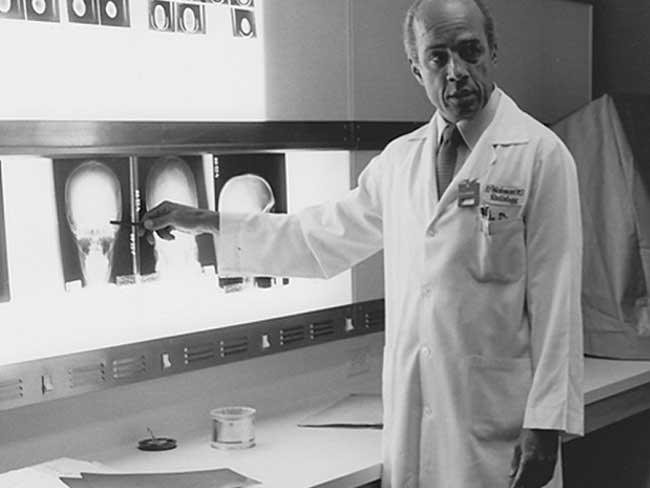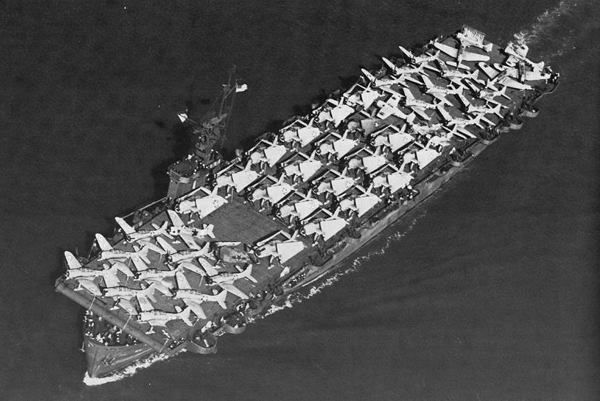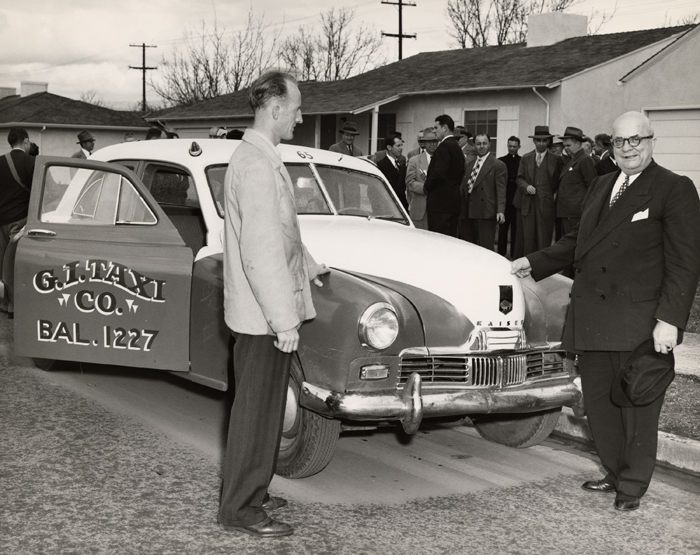Hawaii: Not your garden variety paradise
The history of Kaiser Permanente Hawaii and the resilience of early physicians to overcome challenges and establish a high-quality model of care.
HPMG President Geoff Sewell MD and Heritage Director Tom Debley discuss KP history during a 50th anniversary event.
To most outsiders, Hawaii is that far-off paradise where people go for well-deserved rest and recreation. They come back tan and relaxed, and everyone is green with envy. To be sure, the Hawaiian Islands offer plenty for the casual visitor. But to the residents, it isn’t just about gargantuan waves and potent Mai Tai's.
Hawaiians have to worry about the same things mainlanders worry about a livelihood, a good future for their children, and quality health care. Lucky for them, taking good care of patients is top of mind for physicians in the Hawaii Permanente Medical Group. On a recent trip to Honolulu, I witnessed their determination first hand.
To celebrate 50 years as a medical group, Permanente doctors focused on issues during a seminar in Honolulu. What have they done right in the past 5 decades? And what do they need to do differently — better — in the future?
Overcoming a tough situation
The Hawaii Permanente Medical Group staffed the second launching of Kaiser Permanente in Hawaii. In 1958, Henry J. Kaiser had built a 143-bed hospital in Waikiki and had hired a group of doctors who had other interests as well. In 1960, Kaiser realized that the doctors needed to serve our members exclusively for the partnership to work. He then asked The Permanente Medical Group in California to help set up a new group. Headed by Phillip Chu, MD, the reconfigured medical group began providing for Hawaii members in August 1960.
The 1960s was a difficult time for Permanente physicians, indeed for all group practice doctors. Across the country, traditional medical societies resisted prepaid group practice claiming it was “unethical” and denied patients choice of physicians. The hostile physicians denied hospital privileges and medical society membership to group practice physicians, and at times labeled the new care delivery method as “socialist” and its product “inferior.”
Undaunted, the Hawaii Permanente physicians persevered. They set out to prove their detractors wrong. In 1969, the Hawaii region participated in a study conducted by the Hawaii Medical Association and the University of Michigan that showed KP hospital care to be above average in the state. Later, in 1977, the results of a University of Michigan quality of care study showed Hawaii Permanente Medical Group doctors to be well above the average among Hawaiian physicians. A total of 454 Oahu physicians in 18 specialties, including 42 Permanente physicians, participated in the study.
Quality a major focus
As early as 1969, the Hawaii region had established its own ongoing medical audit system. In 1971, the region received a federal grant to set up an experimental 4-year program to monitor inpatient care. Later, Hawaii medical staff developed methods for monitoring outpatient care for all the Kaiser Permanente regions.
Not only was the Hawaii staff distinguishing itself in quality of care, but they were also participating in government programs to reach out and help the poor of its communities. The group participated in a federal Medicaid program in 1971 to care for 500 indigent families on Oahu and later expanded the program to Maui. Other community outreach programs followed.
Perhaps the ultimate community outreach program was launched in Hawaii in 2009 when Kaiser Permanente started a high-tech mobile service on the Big Island. The 500-square-foot exam unit on wheels brings care and preventive screenings to thousands of members and to the uninsured in the community. The van is equipped with digital mammography equipment and is connected to Kaiser Permanente’s comprehensive electronic health record system.
Henry J. Kaiser’s big Hawaii plans honored
Henry Kaiser’s flamboyant entrée into the Hawaii health care scene in 1958 eventually dovetailed beautifully into the Hawaii Permanente Medical Group’s plans. In celebrating its jubilee, the group staged a key event at the Hawaii Prince Hotel on Waikiki, the site of Kaiser’s first Hawaii hospital. Located adjacent to the Ala Wai Boat Harbor, Kaiser Permanente’s early patients awoke to beautiful tropical sunrises and drifted off to dramatic sunsets.
In 1986, the old hospital was blown up in a public spectacle that became part of an episode of the celebrated television series of the time, “Magnum, P. I.” starring Tom Selleck. The implosion made way for the new hotel, and Kaiser Permanente built a new, modern hospital on Moanalua Road north of Honolulu. This is the site of the Moanalua Medical Center and Clinic where construction is underway to expand and improve services.
Meanwhile, just around the corner in Waikiki, Henry J. Kaiser had built his Kaiser Hawaiian Village, a uniquely designed resort that is now the Hilton Hawaiian Village. Kaiser showed his respect for the indigenous population by designing the villages to represent the culture of the hotel's surroundings. He employed Hawaiian Samoans to come to the resort site and hand-build the guest cottages. These craftsmen actually wove coconut fronds into thatching. To honor Henry Kaiser, the resort has created museum-like public displays telling the story of his Hawaiian feats.
Today, the Hilton resort also hosts the Bishop Museum Collection, a satellite museum that gives visitors a taste of the original Hawaii. The main Bishop Museum, recently restored and with a new science building, is the largest museum in the state and the premier natural and cultural history institution in the Pacific. The museum is located in Honolulu off the beaten tourist path.
